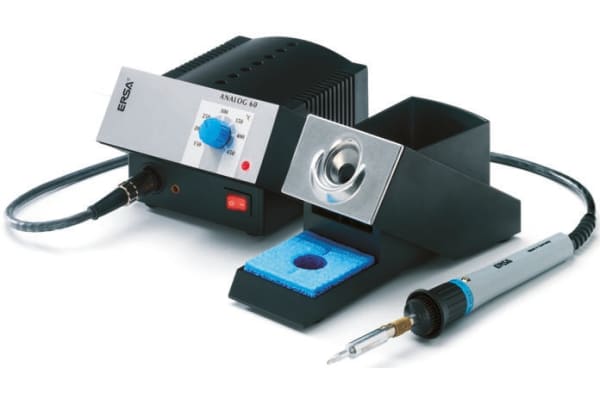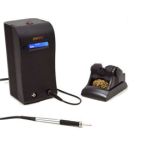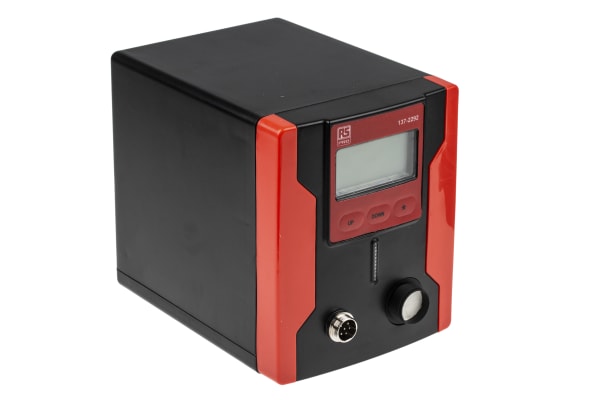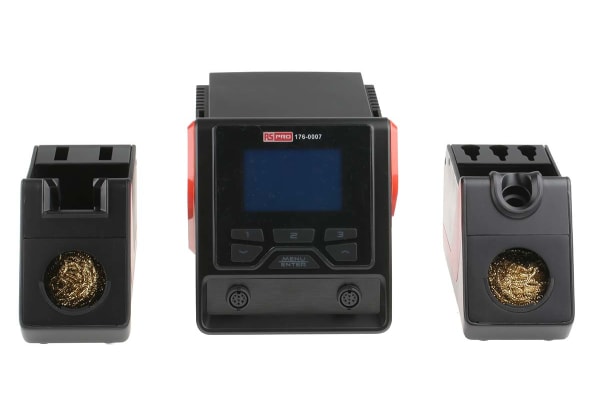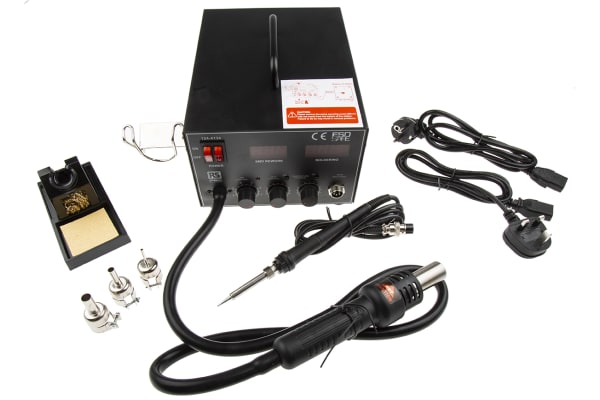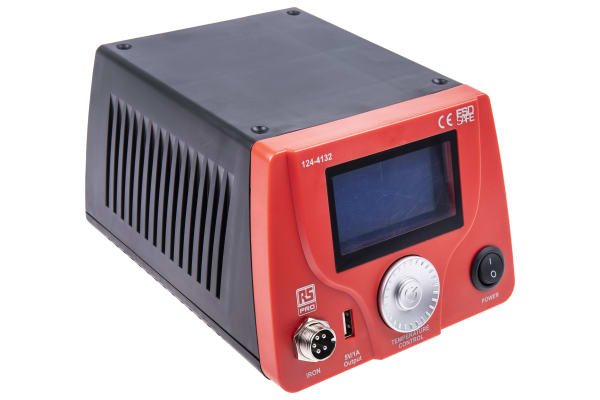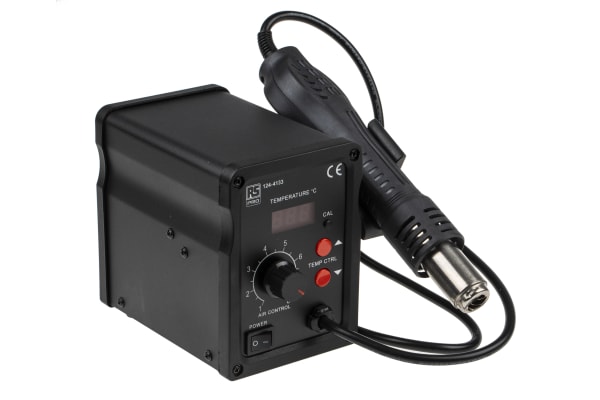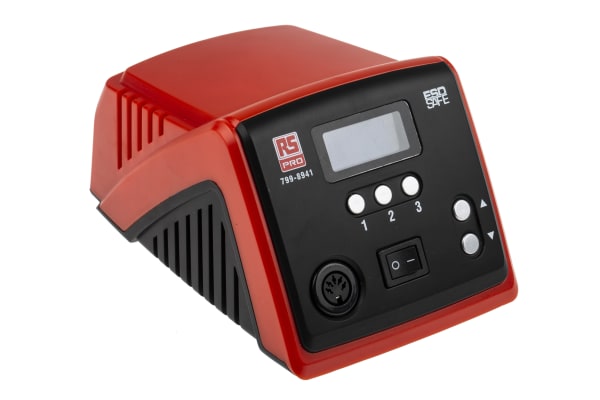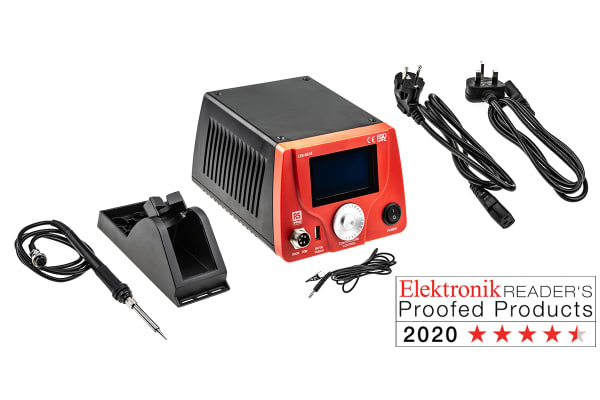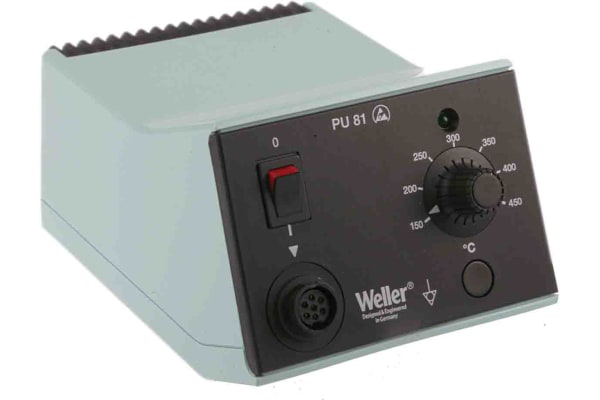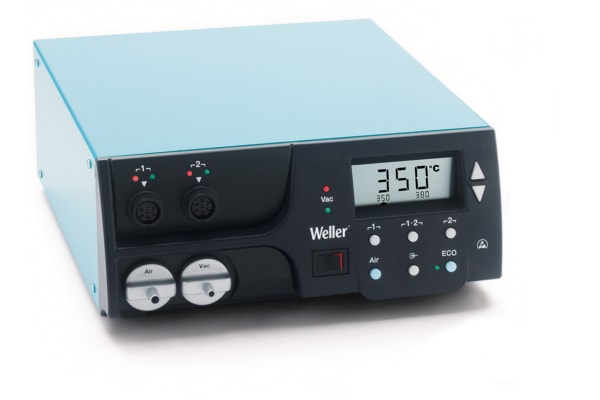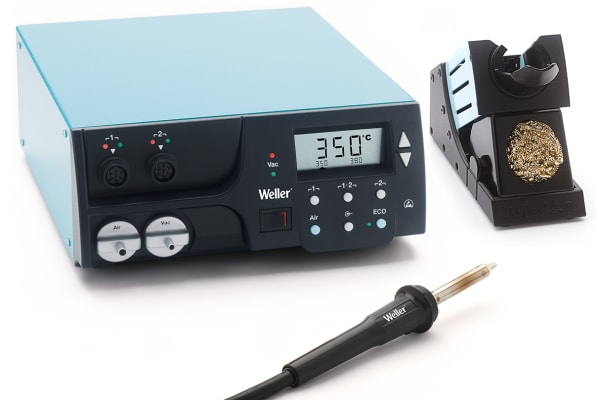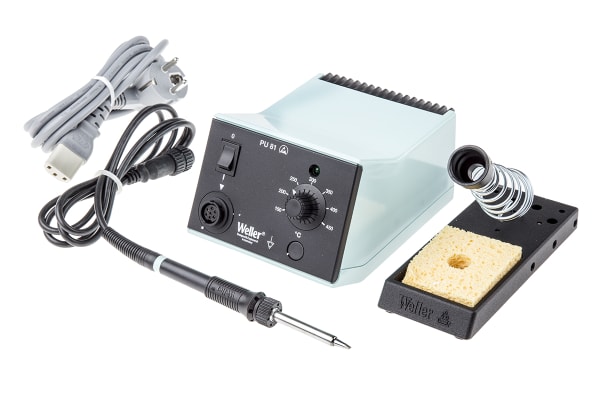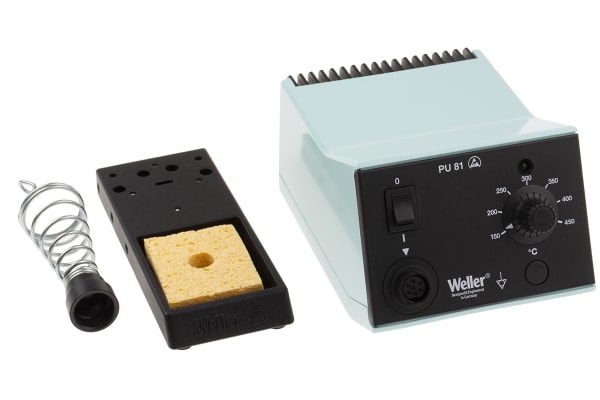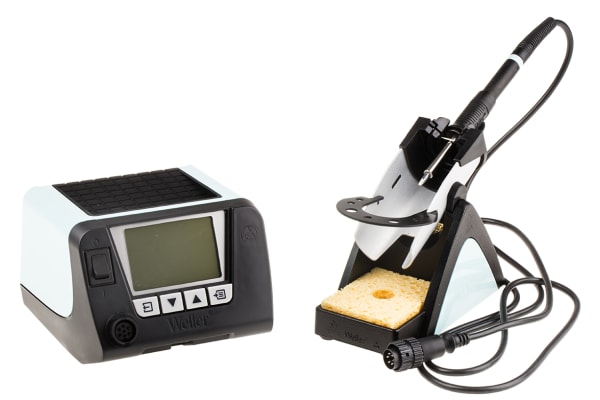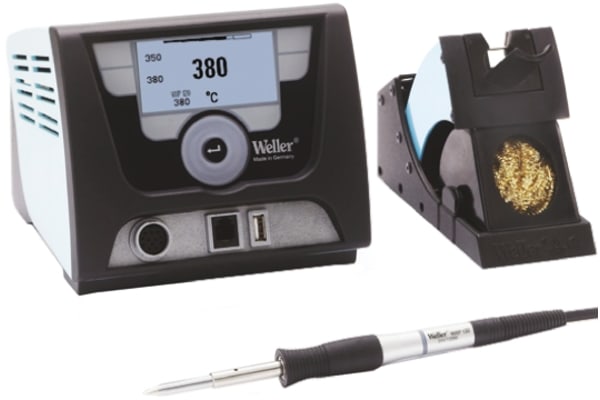Soldering Stations
A soldering station contains heating technology enabling the high heating temperatures required for the soldering process. The soldering iron attached only requires an electrical power source for heating and the application of solder wire to the area where an electrical join is needed between workpieces.FeaturesFor soldering on large objects, sophisticated soldering stations are required. These stations are temperature-controlled and include temperature sensors and regulating components to maintain the temperature of the tip at a steady level. They automatically draw more power when the object they are applying solder to is a large one. Some of these stations include a visual display of the temperature at the irons tip.The key features of some soldering stations are:Digital Front-panel – For clear displaying of informationHot air pencil – Removal of SMD chipsSMD tweezers – Specially designed for SMD chipsEnergy saving mode – Energy saving feature automatically switches off the station if left idleDelayed suction – To eliminate the problem of solder clogging up the tipESD safe – Protects current sensitive componentsTemperature lockout feature – Password code can be used to lock the temperatureHeater/sensor failed detection – If the sensor fails the heater power is shut downProgramming – Selection of precise temperatures at the touch of a button, or being able to select pre-set fixed temperaturesEuro or British plugSoldering and desoldering funtionalityUsesSoldering iron kits are ideal for soldering together transistor leads, wires or pads on printed circuit boards (PCBs). Soldering stations are frequently used for production work in Electronics Assembly, for conducting repairs and completing installations. Less common, applications include plastic welding (which melts plastic workpieces together at a join rather than using separate solder material) and decorating wood with burned in designs (pyrography).
-
Ersa Analog 60 Analogue Soldering Station 60W, 230V, 150°C to 450°C
VND9,413,257.70 -
Metcal MFR-1110 Soldering Station 60W, 240V
VND14,940,277.38 -
Metcal MX-5210 Soldering Station 80W, 100 → 240V
VND28,495,033.70 -
RS PRO AT-937 Soldering Station, 230V, +200°C to +480°C
VND1,482,813.01 -
RS PRO Desoldering Station 140W, 220 → 240V
VND8,873,653.53 -
RS PRO Dual Channel Digital Soldering Station 200W, 230V
VND28,698,405.26 -
RS PRO Hot Air station 700W, 220 → 240V
VND8,003,465.96 -
RS PRO Soldering Station 60W, 220 → 240V
VND5,327,623.49 -
RS PRO Soldering Station 700W, 220 → 240V
VND4,692,819.67 -
RS PRO Soldering Station 90W, 220V
VND9,600,100.09 -
RS PRO Soldering Station, 220 → 240V
VND7,559,689.13 -
SOLDERING IRON,STATION
- RS Stock No.
- 0167504
VND5,245,605.33 -
Thermaltronics TMT-9000S Soldering Station 40W, 220 → 240V
VND16,666,006.42 -
Weller PU 81 Analogue Power Unit 80W, 230V
VND5,066,085.99 -
Weller WE 1010 Soldering Station 70W, 230V
VND7,454,864.90 -
Weller WR 2 Power Unit 300W, 230V
VND53,317,243.98 -
Weller WR 2000A Hot Air station 300W, 230V
VND61,018,581.82 -
Weller WS 81 Analogue Analogue soldering station 80W, 230V
VND14,274,925.98 -
Weller WS 81 Analogue Soldering Station 80W, 230V
VND16,216,580.38 -
Weller WT 1013 Set Soldering Station 90W, 230V, 50°C to 450°C
VND15,639,524.04 -
Weller WT 2020M Soldering Station 150W, 230V, 50°C to 450°C
VND34,296,353.91 -
Weller WT 2M Soldering Station 150W, 230V, 50°C to 450°C
VND15,872,397.03 -
Weller WX 1010 Soldering Station 200W, 230V
VND26,088,679.47 -
Weller WX 1012 Soldering Station 200W, 230V
VND29,191,978.83



